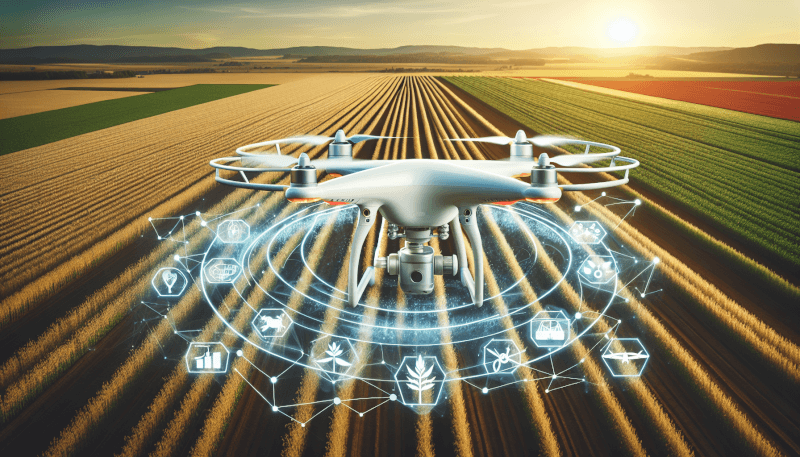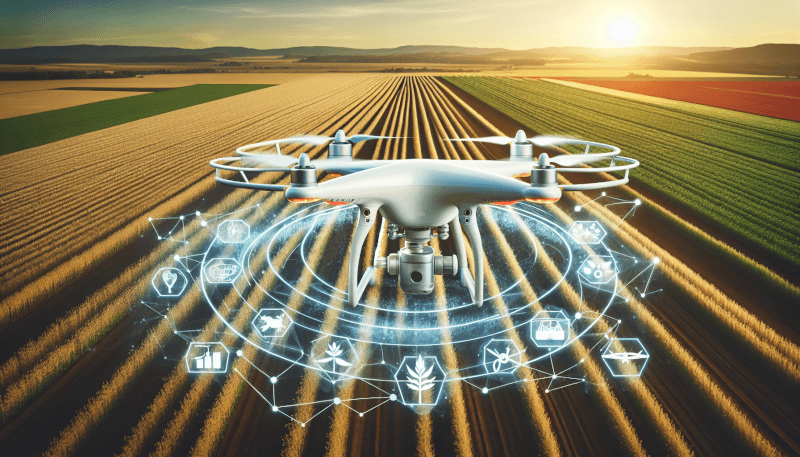Imagine being able to monitor your crops with precision and accuracy from the skies above. As drone technology continues to advance, it is revolutionizing the agriculture industry in remarkable ways. With drones, farmers now have the power to survey vast expanses of farmland efficiently and collect valuable data on crop health, soil conditions, and irrigation needs. This groundbreaking innovation is transforming the way farming is done, providing farmers with vital information that leads to increased efficiency, improved yields, and reduced environmental impact. Discover how the integration of drones into agriculture is paving the way for a more sustainable and productive future in this article.
Reducing costs and increasing efficiency
Replacing manual labor
Drone technology is revolutionizing the agriculture industry by reducing costs and increasing overall efficiency. One area where this is particularly evident is in the replacement of manual labor. Traditionally, agricultural tasks such as field inspections, crop monitoring, and livestock surveillance required significant time and effort to be carried out by humans. However, with the introduction of drones, these tasks can now be completed in a fraction of the time and with greater precision. Drones equipped with advanced cameras and sensors can fly over fields and collect data, providing farmers with valuable insights into crop health, growth patterns, and potential issues. By replacing manual labor with drones, farmers can save on labor costs and allocate their resources more effectively.
Optimizing fertilizer and pesticide usage
Another way drone technology is helping revolutionize the agriculture industry is through the optimization of fertilizer and pesticide usage. In traditional farming practices, the application of fertilizers and pesticides is often done uniformly, without considering the specific needs of different areas within a field. This can result in unnecessary waste, increased costs, and potential harm to the environment. However, drones equipped with advanced imaging and sensing technologies can provide farmers with detailed information about the condition of their fields, allowing them to apply fertilizers and pesticides more precisely. By targeting specific areas where treatments are needed, farmers can reduce their overall usage, minimize waste, and lower costs, all while ensuring the health and productivity of their crops.
Monitoring plant health
Drones are also revolutionizing the way farmers monitor the health of their plants. Traditionally, farmers would need to physically inspect each plant or rely on visual assessments from the ground. This process is time-consuming and may not always provide accurate results. With drones, farmers can easily conduct aerial surveys of their fields, capturing high-resolution images and collecting data about the vegetation’s health. Advanced imaging technologies, such as multispectral and thermal cameras, allow drones to detect early signs of plant stress, disease, or nutrient deficiencies that may not be visible to the naked eye. By regularly monitoring plant health with drones, farmers can quickly identify and address potential issues before they spread, leading to improved crop yields and overall better farm management.
Enhancing crop management
Remote sensing and monitoring
One of the key benefits of drone technology in agriculture is its ability to provide remote sensing and monitoring services. Drones equipped with various sensors, such as infrared cameras and LiDAR systems, can capture detailed data about the condition of crops, soil, and vegetation. These sensors can detect subtle changes in plant health, moisture levels, and soil composition, allowing farmers to make informed decisions about irrigation, fertilization, and pest control. By regularly monitoring their fields using drones, farmers can gain real-time insights into the health and development of their crops, enabling them to take immediate action if necessary and optimize crop management practices.
Mapping and surveying
Drones are transforming the way farmers map and survey their fields. Traditional methods of mapping and surveying, such as using ground-based equipment or satellite imagery, often come with limitations in terms of accuracy, cost, or availability. Drones, on the other hand, can quickly and efficiently capture high-resolution aerial images, providing farmers with accurate and up-to-date topographic maps of their fields. These maps can be used for various purposes, including precision planting, land management, and infrastructure planning. By utilizing drone technology for mapping and surveying, farmers can save time, reduce costs, and make more informed decisions based on accurate and detailed data.
Irrigation management
Effective irrigation management is crucial for crop growth and productivity. However, traditional irrigation practices often rely on guesswork or predetermined schedules that may not take into account the specific needs of each plant or field. With the help of drones, farmers can implement more precise and efficient irrigation management strategies. By utilizing sensors and thermal imaging cameras, drones can assess moisture levels within the soil and identify areas that require additional or reduced irrigation. This data can be used to create irrigation maps or inform automated irrigation systems, ensuring that water is distributed in a targeted manner, reducing waste and maximizing crop growth.
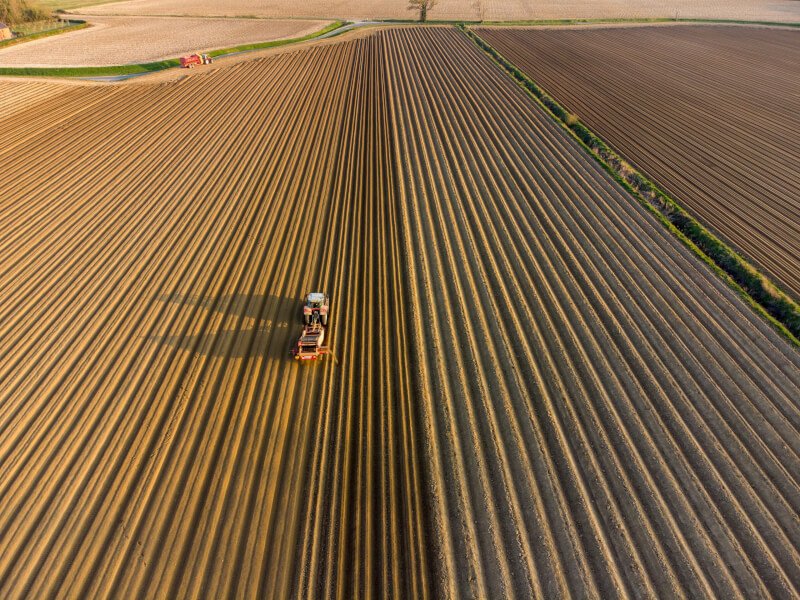
Improving crop yields and quality
Precision planting and seeding
Drones are revolutionizing crop planting and seeding through precision technology. Traditional methods of planting often rely on manual labor or standard machinery, which may lead to uneven distribution of seeds or improper spacing between plants. Drones equipped with precise GPS guidance systems and seed dispensers can accurately plant seeds at specific locations, ensuring optimal spacing and uniform distribution. This precision planting technique not only saves time and labor but also maximizes the use of available land and resources. By eliminating gaps or overplanting, farmers can achieve higher crop yields and improved overall crop quality.
Applying targeted treatments
In addition to precision planting, drones also enable the application of targeted treatments to crops. Whether it’s applying fertilizers, pesticides, or herbicides, drones equipped with sprayers or precision dispensers can accurately target specific areas or individual plants. This targeted approach minimizes chemical overspray, reduces environmental impact, and optimizes the effectiveness of treatments. By reducing the amount of chemicals used and ensuring that treatments are administered only where needed, farmers can promote healthier plants, reduce the risk of crop damage, and save on input costs.
Monitoring livestock health
Drones are not just beneficial for crop management but also for monitoring livestock health. The well-being of livestock is crucial for a successful agricultural operation, but continuous monitoring can be challenging and time-consuming. Drones equipped with cameras and thermal sensors can quickly and efficiently survey large areas of grazing land, allowing farmers to monitor the health and behavior of their livestock. By identifying signs of distress or injury early on, farmers can intervene promptly and ensure the welfare of their animals. Drones can also be used to locate missing animals, inspect fences or infrastructure, and assess pasture conditions, providing farmers with valuable information for livestock management and ensuring the sustainability of their operations.
Mitigating environmental impact
Reducing chemical usage
One of the significant benefits of drone technology in agriculture is the ability to reduce chemical usage. Traditional farming practices often rely heavily on the indiscriminate application of fertilizers, herbicides, and pesticides. This not only poses environmental risks but also leads to increased costs for farmers. Drones equipped with advanced imaging technologies and artificial intelligence algorithms can analyze crop data and detect signs of pests, diseases, or nutrient deficiencies. By precisely targeting treatments to affected areas, farmers can minimize the overall use of chemicals, reduce the potential for environmental contamination, and promote sustainable farming practices.
Preventing soil erosion
Soil erosion is a significant concern in agriculture, as it can lead to decreased soil fertility, degradation of water quality, and reduced crop yields. Drones equipped with high-resolution cameras and LiDAR systems can provide farmers with detailed insights into soil erosion patterns and identify areas at risk. By mapping erosion-prone areas and implementing erosion control strategies, such as contour plowing, cover cropping, or the establishment of windbreaks, farmers can mitigate the impact of erosion and promote healthier soils. Drones can also monitor the effectiveness of erosion control measures over time, allowing farmers to adapt their practices as needed and protect their land for future generations.
Protecting water resources
Water resources are crucial for agricultural production, and efficiently managing water usage is essential for both environmental sustainability and cost-effectiveness. Drones equipped with sensors and thermal imaging technology can assess soil moisture levels, identify irrigation inefficiencies, and detect potential leaks or water waste in irrigation systems. By providing farmers with real-time data on water usage and distribution, drones can help optimize irrigation practices and reduce water consumption. This not only conserves a precious resource but also minimizes the impact on water sources, such as rivers, lakes, or groundwater reservoirs, contributing to the overall sustainability of agricultural operations.
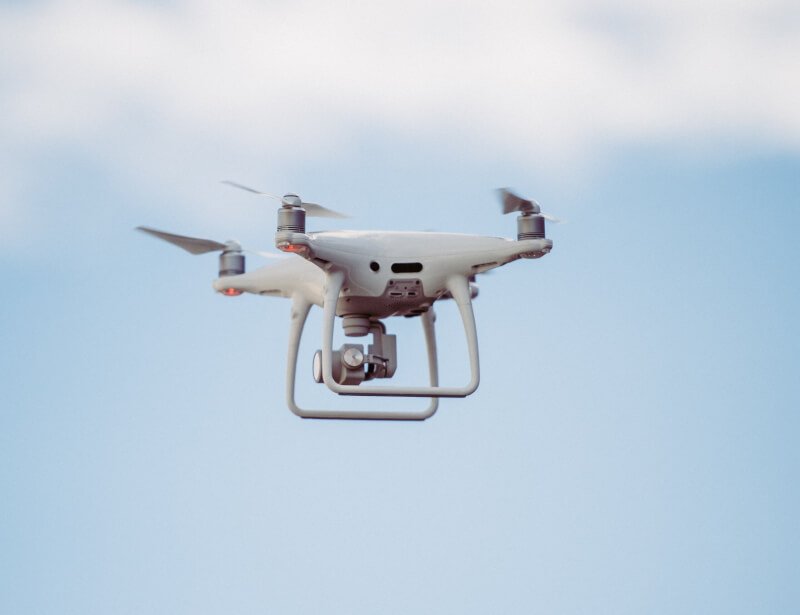
Increasing safety and reducing risks
Identifying crop disease and pests
Crop diseases and pests can have severe consequences for farmers, potentially leading to significant crop losses if not timely identified and addressed. Drones equipped with specialized imaging technologies, such as multispectral or hyperspectral cameras, can detect early signs of disease or pest infestation through the analysis of plant health indicators, such as chlorophyll levels or thermal patterns. By regularly monitoring crops for these indicators, farmers can quickly identify potential issues, take appropriate action, and prevent the spread of diseases or pests. This proactive approach not only protects crop yields but also minimizes the use of harmful chemicals by addressing issues before they become widespread.
Monitoring weather conditions
Weather conditions play a crucial role in agricultural operations, influencing planting schedules, irrigation requirements, and pest management strategies. Drones equipped with weather sensors and meteorological instruments can collect data on temperature, humidity, wind speed, rainfall, and other relevant weather parameters. By monitoring real-time weather conditions in their fields, farmers can make informed decisions about when to plant, irrigate, or apply treatments. This information helps optimize farming operations, reduces the risk of weather-induced crop damage or yield losses, and enhances overall farm safety and productivity.
Preventing accidents and injuries
Farming can be a hazardous occupation, with various risks associated with tasks such as working at heights, operating heavy machinery, or handling livestock. Drones equipped with cameras and sensors can help identify potential hazards or unsafe conditions, reducing the risk of accidents and injuries for farmers and workers. Drones can remotely inspect roofs, silos, or tall structures, eliminating the need for risky manual inspections. They can also monitor livestock behavior, facilitating the identification of aggressive or distressed animals, and helping farmers take appropriate safety measures. By using drones as an additional safety tool, farmers can create a safer working environment and minimize the potential for accidents or incidents.
Expanding agricultural capabilities
Aerial seeding and spraying
Drones are expanding agricultural capabilities through innovative techniques such as aerial seeding and spraying. Aerial seeding involves the use of drones to disperse seeds over large areas, providing a cost-effective and efficient method for reforesting, revegetating, or restoring degraded land. Drones equipped with seed dispensers can cover vast areas that would be otherwise challenging to access. Similarly, drones equipped with sprayers can apply treatments to crops, trees, or vegetation, even in remote or difficult-to-reach locations. This aerial approach not only saves time and labor but also enables the restoration or management of areas that were previously inaccessible, allowing for increased efficiency and expanded agricultural possibilities.
Livestock monitoring and herding
Drones are also revolutionizing livestock management by enabling efficient monitoring and herding practices. Traditional methods of monitoring or herding livestock often require extensive manpower or the use of traditional herding dogs. Drones equipped with cameras and speakers can effectively monitor and direct the movement of livestock across large areas. They can remotely survey grazing land, locate individual animals, and guide them toward desired locations, such as feeding areas or holding pens. By utilizing drones for livestock monitoring and herding, farmers can save time, reduce labor costs, and ensure the safety and well-being of their animals.
Wildlife and pest management
Drones play a crucial role in wildlife and pest management in agriculture. Invasive species, such as pests or wildlife, can cause significant damage to crops, leading to reduced yields and economic losses. Drones equipped with imaging technologies can detect the presence of pests or wildlife in agricultural areas, allowing farmers to take appropriate measures to mitigate their impact. For instance, drones can monitor for signs of bird damage in crops and scare them away using visual or acoustic deterrents. They can also help identify pest hotspots or areas of high wildlife activity, enabling targeted pest control measures. By utilizing drones for wildlife and pest management, farmers can reduce crop losses, protect their investments, and promote harmonious coexistence between agriculture and wildlife.
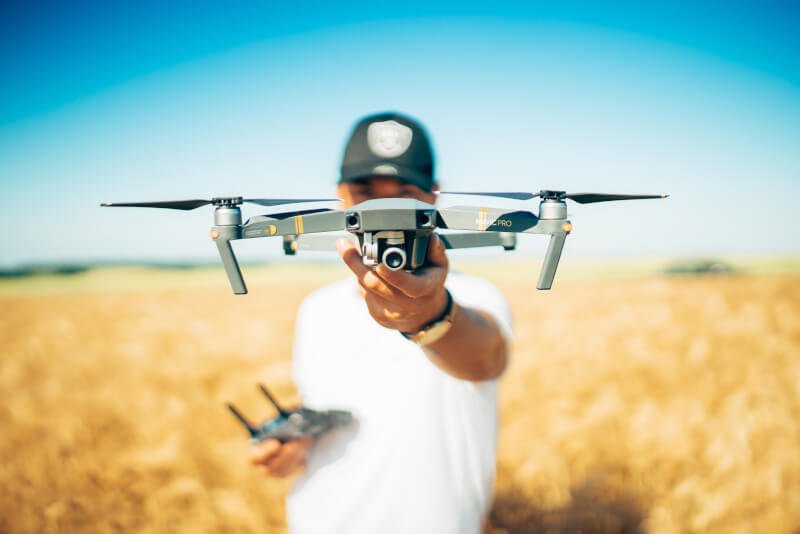
Enabling precision agriculture
Creating detailed field maps
Drones are instrumental in enabling precision agriculture by providing farmers with detailed field maps. Traditional methods of creating field maps, such as manual surveys or satellite imagery, often come with limitations, such as cost, availability, or accuracy. Drones equipped with advanced imaging technologies, GPS, and mapping software can quickly collect data and generate accurate field maps. These maps can include information about plant health, soil composition, elevation, or irrigation needs, allowing farmers to make informed decisions and implement precision farming techniques. By utilizing detailed field maps created by drones, farmers can optimize their practices, reduce input costs, and maximize crop yields and quality.
Analyzing crop data
The vast amount of data collected by drones during aerial surveys is invaluable for farmers seeking to optimize their crop management practices. However, analyzing this data manually can be time-consuming and overwhelming. Drones are revolutionizing agriculture by incorporating machine learning and artificial intelligence algorithms to process and interpret crop data. By training these algorithms with large amounts of data, drones can automatically identify patterns, detect anomalies, and provide real-time insights into crop health, growth rates, or potential issues. This data analysis enables farmers to make data-driven decisions, adapt their practices, and respond promptly to changes in their fields, enhancing overall crop management and farm productivity.
Implementing precision farming techniques
Precision farming techniques rely on accurate data and targeted interventions to maximize crop yields and optimize resource usage. Drones are playing a key role in implementing these techniques by providing farmers with the necessary data for precision agriculture. By utilizing drones equipped with advanced imaging sensors, farmers can collect high-resolution images and data about their crops, such as plant health, growth patterns, or variability within a field. This information can then be used to generate prescription maps, which guide farmers in implementing precise actions, such as variable rate application of fertilizers or targeted irrigation. Precision farming techniques enabled by drones allow farmers to minimize waste, reduce costs, and ensure the productivity and sustainability of their agricultural operations.
Facilitating automated operations
Autonomous drones for multiple tasks
Drone technology is facilitating automated operations in agriculture by enabling the use of autonomous drones for multiple tasks. Autonomous drones can operate without human intervention, following pre-programmed flight paths or utilizing advanced AI algorithms to make decisions and adapt to changing conditions. In agriculture, autonomous drones can perform tasks such as aerial surveys, mapping, inspections, or crop monitoring, freeing up human labor for other essential activities. These drones can be equipped with various sensors and payloads tailored to specific tasks, optimizing their performance and accuracy. By utilizing autonomous drones, farmers can streamline repetitive processes, increase operational efficiency, and achieve more with fewer resources.
Incorporating machine learning and AI
The integration of machine learning and artificial intelligence (AI) into drone technology is revolutionizing agriculture. Drones equipped with AI algorithms can process vast amounts of data collected from fields, identify patterns, and make informed decisions based on this information. For example, AI-powered drones can classify crop health indicators, detect anomalies, or predict crop yields based on historic data and current conditions. These insights help farmers optimize their practices, reduce risks, and improve overall farm management. By incorporating machine learning and AI into drone technology, agriculture is entering a new era of smart farming, where decisions are based on real-time data, enabling farmers to achieve better results with increased precision.
Streamlining repetitive processes
Repetitive processes in agriculture, such as crop monitoring or field inspections, can be time-consuming and labor-intensive. Drones are streamlining these repetitive processes by providing a quick and efficient means of data collection. Instead of manually inspecting each plant or walking through fields, farmers can deploy drones to capture high-resolution images or collect data from various sensors. This data can then be processed and analyzed using AI algorithms or other software tools to provide farmers with valuable insights. By streamlining repetitive processes through the use of drones, farmers can save time and labor, allocate resources more efficiently, and focus on higher-value activities that contribute to the growth and success of their agricultural operations.
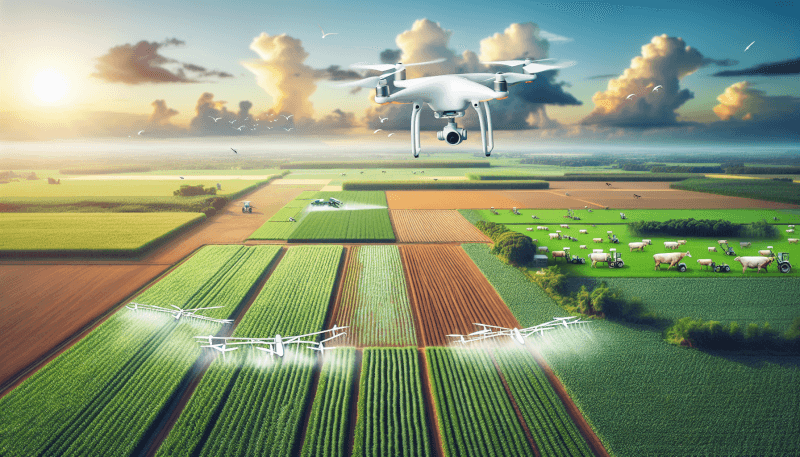
Overcoming challenges and limitations
Regulatory hurdles and airspace management
While drone technology offers numerous benefits for agriculture, there are still regulatory hurdles and airspace management challenges that need to be addressed. In many countries, regulations concerning drone operations in agricultural settings are still evolving, and obtaining the necessary permits or licenses can be complex and time-consuming. Additionally, airspace management becomes critical as drones become more prevalent in agricultural operations. Collaboration between farmers, drone operators, and regulatory authorities is crucial for ensuring safe and efficient drone operations in agriculture. Establishing clear guidelines, developing standardized procedures, and implementing effective communication systems are essential for overcoming these challenges and maximizing the potential of drone technology in agriculture.
Data privacy and security concerns
As drones collect and transmit sensitive data, such as GPS coordinates, images, or sensor readings, data privacy and security concerns are significant challenges that need to be addressed. Farmers must ensure that the data collected by drones remains secure and protected from unauthorized access or use. Implementing secure data storage and transmission protocols, encrypting sensitive information, and establishing robust cybersecurity measures are essential for safeguarding agricultural data. Additionally, farmers should also carefully consider the privacy implications of drone operations, ensuring that personal information or images of individuals are not captured or used without consent. By addressing data privacy and security concerns, the agricultural industry can harness the full potential of drone technology while protecting the privacy and interests of stakeholders.
Cost of drone technology implementation
While the benefits of drone technology in agriculture are evident, the cost of implementing this technology can be a limiting factor for some farmers. Drones, along with their associated sensors and software, can represent a significant upfront investment. Additionally, ongoing costs, such as maintenance, training, or software updates, should also be considered. For smaller-scale or resource-limited operations, the cost of drone technology may pose a barrier to entry. However, as the technology continues to advance, prices are likely to become more affordable over time. Furthermore, the ROI (return on investment) can be significant, considering the potential savings in labor costs, increased efficiency, and improved crop yields. By carefully evaluating the costs and benefits and exploring funding options, farmers can overcome these limitations and embrace the transformative potential of drone technology in agriculture.
Future advancements and possibilities
Swarm drone technology
The future of drone technology in agriculture holds exciting possibilities, including the development of swarm drone technology. Swarm drones refer to a group of drones that can work together autonomously, coordinating their actions to achieve a specific goal. In agriculture, swarm drones could be utilized for tasks such as pollination, crop monitoring, or even collaborative planting or harvesting. By combining the capabilities of multiple drones, farmers can cover large areas more efficiently, gather more data, and enhance productivity. Swarm drones can also adapt to changing conditions, dynamically adjusting their flight paths or task assignments to optimize performance. The development of swarm drone technology opens up new opportunities for precision agriculture, enabling farmers to achieve even greater efficiency and productivity.
Integration with other smart farming technologies
Drone technology in agriculture is likely to integrate with other smart farming technologies, revolutionizing farm management practices. The combination of drones with technologies such as satellite imagery, weather forecasting, or soil sensors can provide farmers with a holistic view of their fields and enable advanced decision-making. For example, drones can be deployed to verify the accuracy of satellite data or ground-based sensor readings, ensuring a more comprehensive understanding of crop conditions. Integration with farm management software or IoT (Internet of Things) systems can further enhance the efficiency of data collection, analysis, and action implementation. By harnessing the potential of multiple smart farming technologies, farmers can achieve enhanced productivity, sustainability, and resource optimization.
Development of specialized agricultural drones
As drone technology continues to evolve and industry-specific needs arise, the development of specialized agricultural drones is expected. While drones currently used in agriculture are versatile and effective, further advancements can be made to meet specific challenges or requirements of the agriculture industry. For example, specialized agricultural drones can be equipped with more advanced sensors, such as near-infrared or hyperspectral cameras, to capture even more detailed and accurate crop data. Drones designed for specific tasks, such as pollination or crop spraying, can be fine-tuned to optimize performance, safety, and efficiency. The development of specialized agricultural drones will allow farmers to address unique challenges more effectively, further enhancing the impact of drone technology in revolutionizing the agriculture industry.
In conclusion, drone technology is revolutionizing the agriculture industry by reducing costs, increasing efficiency, and enabling precision farming practices. By replacing manual labor, optimizing resource usage, and monitoring plant and livestock health, farmers can achieve higher crop yields, improved product quality, and more sustainable farming practices. Drones also help mitigate environmental impacts by reducing chemical usage, preventing soil erosion, and protecting water resources. In addition, they enhance safety by identifying crop diseases, monitoring weather conditions, and preventing accidents. Drones expand agricultural capabilities through aerial seeding and spraying, livestock management, and wildlife and pest management. Furthermore, they enable precision agriculture by creating detailed field maps, analyzing crop data, and implementing targeted interventions. Drones also facilitate automated operations by incorporating machine learning and AI, streamlining repetitive processes, and overcoming challenges such as regulatory hurdles and data privacy concerns. The future of drone technology in agriculture holds exciting possibilities with advancements in swarm drone technology, integration with other smart farming technologies, and the development of specialized agricultural drones. By embracing and utilizing drone technology, the agriculture industry can achieve significant advancements in productivity, sustainability, and overall farm management.
